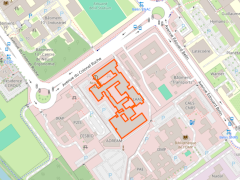Energy autonomy (for communicating systems)
Energy autonomy for communicating systems by electromagnetic Wireless Power Transfer or by ambient electromagnetic energy harvesting.
The MINC team is developing new wireless and battery-free communicating objects that are energy autonomous thanks to electromagnetic Wireless Power Transfer techniques or by harvesting ambient electromagnetic energy.
Electromagnetic Wireless Power Transfer and ambient electromagnetic energy harvesting
The MINC team's research is based on an approach ranging from devices to systems, with the aim of achieving energy autonomy for complex communicating systems by Wireless Power Transfer (WPT) or by harvesting ambient energy. These systems are designed for a variety of applications, including: the Internet of Things (IoT), biomedical (e.g. battery-free intracranial sensors, powering optical sensors by energy harvesting inside an MRI installation, etc.), multi-decade monitoring of intelligent buildings, space, etc.
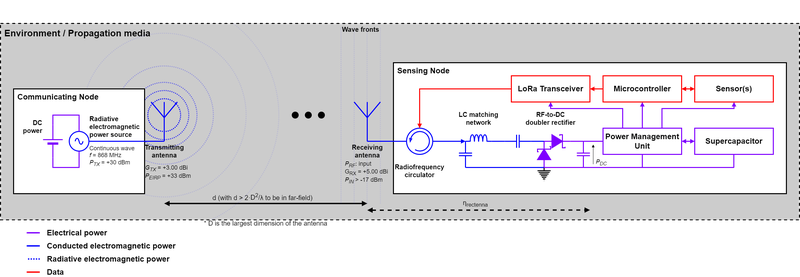
Schematic diagram of the radiated electromagnetic Wireless Power Transfer using radio-frequency waves.
Wireless and battery-free sensors and sensors networks
To meet economic and societal challenges, the MINC team is developing wireless and battery-free sensors that make optimum use of the Simultaneous Wireless Information and Power Transfer (SWIPT). In other words, the effective cohabitation of functions relating to Wireless Power Transfer, measurement of physical parameters, wireless communication (BLE, LoRaWAN, RFID, etc.) and cybersecurity implemented at both software (data communication) and hardware (power transmission) levels.
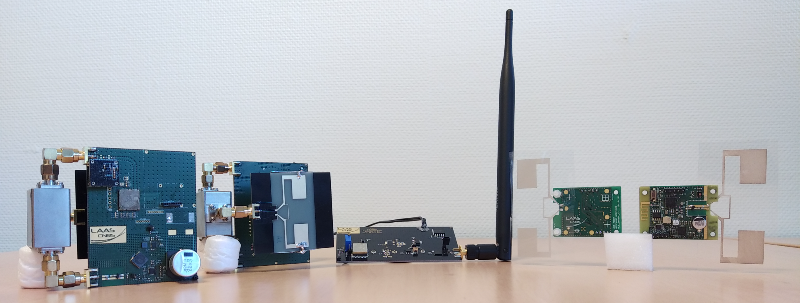
Photo combining two LoRaWAN wireless and battery-free sensors, a source of radiated electromagnetic power (+33 dBm at 868 MHz) and two BLE wireless and battery-free sensors.
Wireless and battery-free BLE sensors
These sensors use a standard capacitor (from 100 µF to 220 µF) as the energy storage element and can perform physical measurements (temperature, relative humidity and dielectric resistivity) with a measurement periodicity controlled by the power source. It also employs an antenna designed on a translucent and flexible substrate.
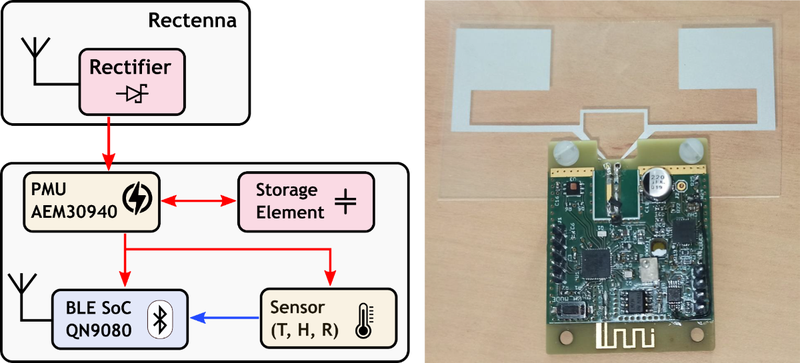
Block diagram and photo of a wireless and battery-free BLE sensor.
Wireless and battery-free LoRaWAN sensors
These sensors use a supercapacitor (2.2 mF) as an energy storage element and can perform physical measurements (temperature, relative humidity, mechanical deformation and dielectric resistivity) with a measurement periodicity controlled by the power source. They have a tested remote powering distance of at least 11 metres and a telecommunication distance of several kilometres. Using a radio frequency circulator, a single antenna is used to simultaneously recover the electromagnetic power generated for its supply and transmit the measured data.
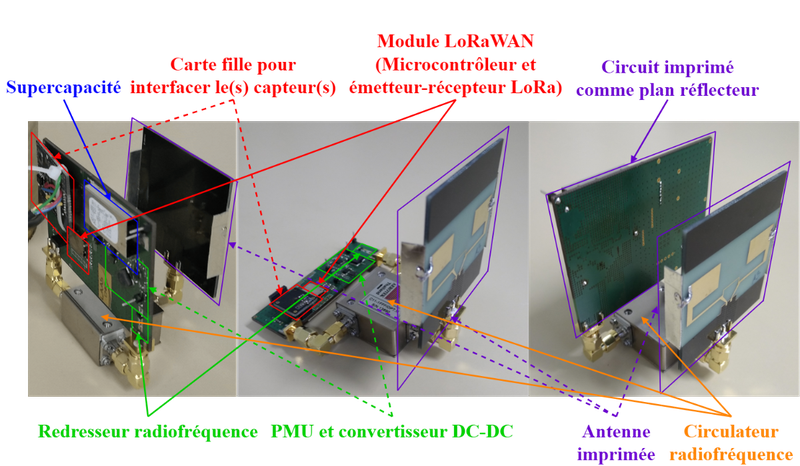
Photo of a wireless and battery-free LoRaWAN sensor.
Contacts: Alexandru TAKACS, Daniela DRAGOMIRESCU, Marjorie GRZESKOWIAK, Gaël LOUBET






